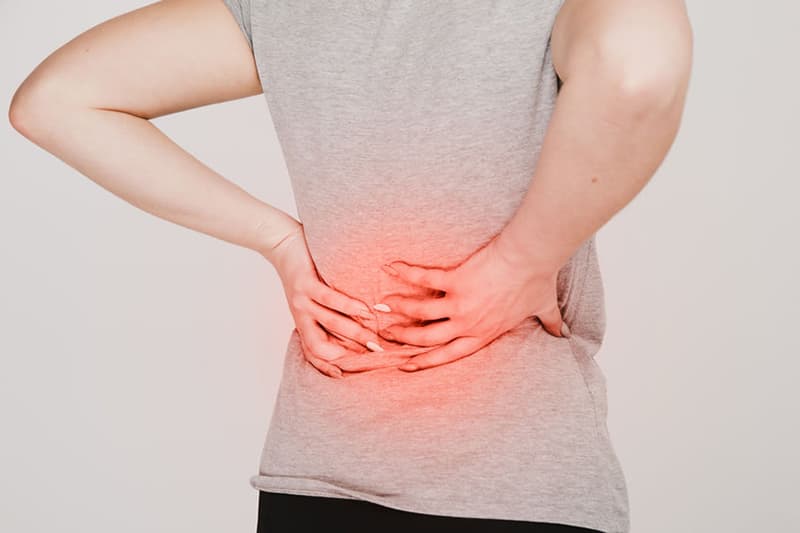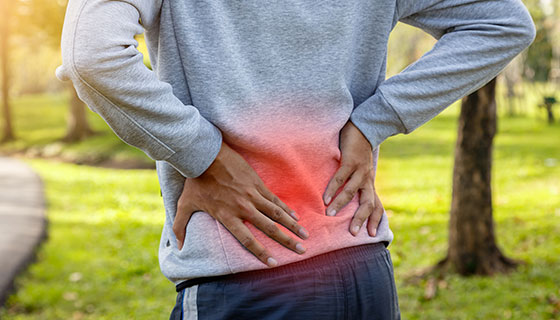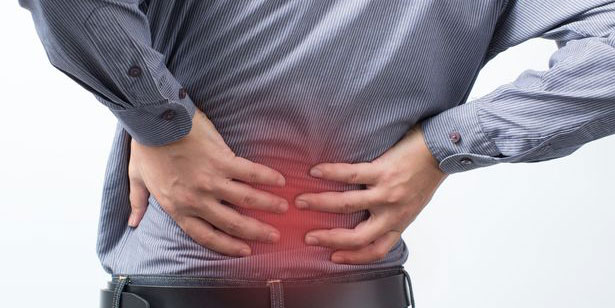Back pain is a symptom that frequently manifests itself in the early stages of the disease; however, it is also possible for back pain to be a chronic symptom that continues for several weeks or months after infection. Please continue reading to find out why COVID-19 may occasionally cause back pain and what it is like to have back pain caused by COVID-19.
Is COVID-19 Associated With Back Discomfort As A Symptom?
According to Reliable Source, pain is one of the most common symptoms of COVID-19. Furthermore, it frequently manifests itself as one of the early symptoms, even when no other symptoms are present. The following are the forms of pain that individuals report experiencing the most:
- headaches
- backache and other bodily pains
In up to 36 per cent of people, the initial COVID-19 symptoms include general muscle aches, known medically as myalgia. This was shown in a letter to the editor. However, having aches and pains throughout the body does not necessarily indicate that you have COVID-19. They are also typical of the early stages of the flu.
According to a study conducted in 2020 by a trusted source, 69.3 per cent of the 210 people who had Symptom of COVID-19 reported experiencing pain as a symptom. 46.6 per cent of those who reported pain said the pain was their primary symptom, and 43.6 per cent said that they were experiencing back pain. Back pain was determined to be one of the most often reported COVID-19 symptoms, according to another study evaluation from the year 2020. Back discomfort was experienced by 10% of the people whose cases were investigated by the researchers (Reliable Source).
Why Does COVID-19 Make My Back Hurt So Much?
Aches and pains throughout the body, particularly in the muscles or joints, are typical symptoms of COVID-19 and other viral infections. It is generally believed that your body's immune response is the primary source of pain. Your immune system may be prompted to produce more cytokines, contributing to inflammation if you have a COVID-19 infection. An additional study that was reviewed in the year 2020 found that the aches in the muscles brought on by viral infections have been linked to an upregulation of a particular cytokine called interleukin-6.

It has also been hypothesised that the virus that causes COVID-19 might also cause tissue damage, which would then contribute to the formation of pain. COVID-19 is caused by a virus that can imitate an enzyme known as angiotensin-converting enzyme 2 (ACE2) to enter your cells. The research review for the year 2020 presented at the beginning of this section demonstrated that receptors for this enzyme are located in many different parts of your body, including your skeletal muscles.
Studies conducted using autopsies on people who developed severe acute respiratory syndrome (SARS), a respiratory disease caused by a virus similar to SARS-CoV-2, did not find any evidence of the virus in the muscle tissue of those people. Therefore, additional research is required to determine whether or not damage to the muscles is a source of pain in people with COVID-19.
Can You Determine Whether Or Not The COVID-19 Infection Caused Your Back Pain?
There are a plethora of potential causes of back pain. If you did not also have a positive result on the COVID-19 diagnostic test. However, there is no way to guarantee that the results of a diagnostic test will be accurate. According to Reliable Source, the pain level reported by people with COVID-19 in the medical literature is mild to moderate, comparable to the pain level reported by people with other viral infections. The pain in the back that COVID-19 causes are typically described as dull and aching rather than the sharp or stabbing pain that is often associated with a sudden injury to the muscles.

Could Long-Haul COVID-19 Cause Back Pain?
Some people infected with COVID-19 will continue to experience symptoms of the illness for several weeks or even months after the initial infection. Long-haul symptoms are so named because they last for an extended period. Symptoms include difficulty breathing, fatigue, altered smell or taste, brain fog, and cough joint or muscle pain. After a COVID-19 infection, there have been reports of some patients developing chronic back pain. Researchers are still attempting to ascertain how widespread the problem is.
watch next


